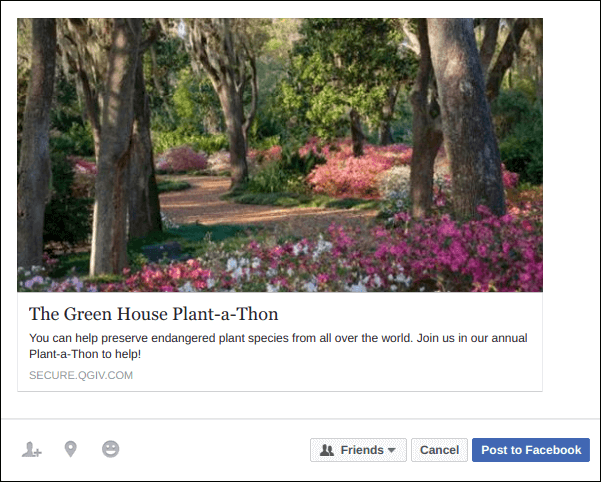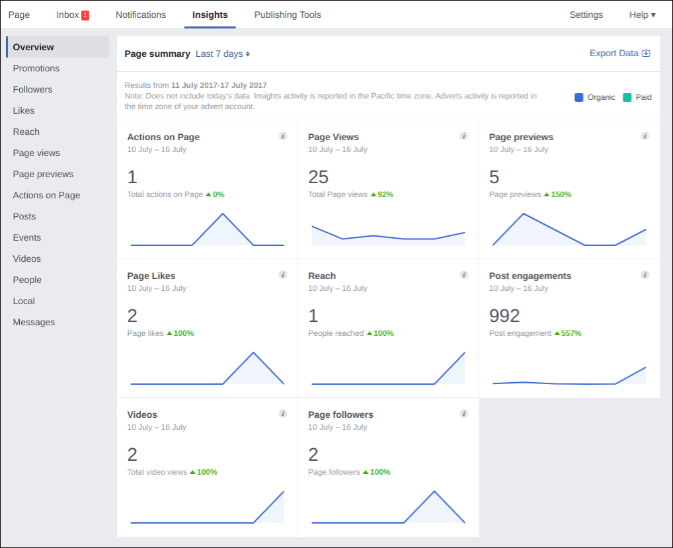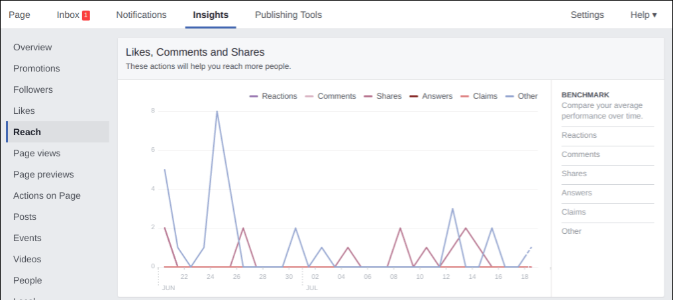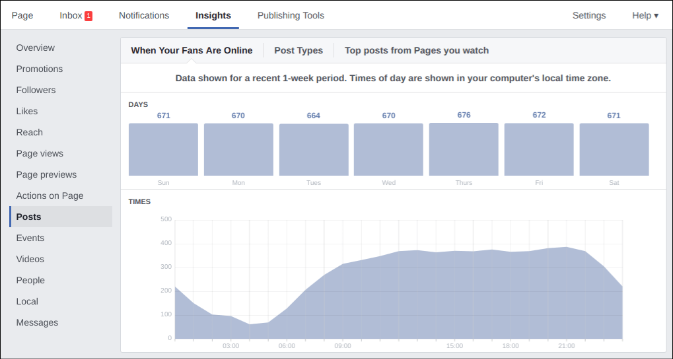These days, nearly everyone is on at least one social media platform. Whether they’re liking, retweeting, or pinning, social media usage is the norm.
Social media posts were the #1 drivers of charitable giving for those we surveyed in our Navigating the Unknown eBook, and it can’t be ignored that Facebook is still the social media giant. Despite declining teenage involvement in recent years, many people still use Facebook to connect with each other, businesses, and nonprofits.
Your organization can ask for donations in any number of ways and using Facebook to solicit contributions is just one of the tools that your nonprofit should have in its toolbox.
You’ll want to:
- Start with a strong Facebook presence
- Post regular content on Facebook
- Make it easy for supporters to donate via your Facebook page
- Track your Facebook insights
Take a look at the following best practices for asking for donations on Facebook!
1. Start with a strong Facebook presence
It’s going to be tricky to ask people for donations on Facebook if your organization’s page isn’t up to par or doesn’t have an engaged audience.
As with any strategy for asking for donations, you’ll need to start with those closest to your organization and move outward. Invite the members of your nonprofit team, your donors, volunteers, and organizational leadership, to like your Facebook page to form a solid base.
Ask those closest to your nonprofit to invite their own friends to like your Facebook page as well, and make sure that you have a way for other individuals to find your Facebook page through other communication channels and on your website.
An easy way to do this is to start an awareness campaign. Because Facebook content is inherently shareable, the use of an awareness campaign on Facebook encourages your followers to share a status or post that you create.
This can be an image, a video, or just a status. As long as the information is about your nonprofit and the work you do, the medium can differ. The goal is to get as many people as possible to share the content. This increases your nonprofit’s visibility on other people’s newsfeeds, resulting in more likes and potentially more donations.
Having a strong Facebook presence is crucial, but it’s important to remember that likes don’t translate into automatic donations. Posting regular content and engaging with your followers helps cultivate new donors and steward the ones you already have.
2. Post regular content on Facebook
One of the most important steps in Facebook fundraising is to post regular content that encourages your followers to engage with your organization.
Posting content on Facebook regularly can take a variety of forms. Let’s take a look at each of those separately.
Straightforward Appeals
Let’s get this point out of the way first. If you want to raise more money by fundraising on Facebook, you have to ask for donations. Plain and simple. Don’t just post “Give us your money,” though.
A good, straightforward appeal incorporates a combination of:
- Visual content (pictures or videos).
- Links to your donation page or general website.
- Information about what the donations are going toward.
- Data about current progress and donations needed to reach a campaign goal (when applicable)
Take a look at our example of a Facebook post from Qgiv’s peer-to-peer fundraising software:
It’s important to use visual content in your Facebook posts. You have to find a way to rise above the noise of everyone else’s updates, photos, and statuses. Creating eye-catching images and graphics within your appeals will help draw more people to your posts and consequently, to your donation page.
It’s not a good idea to only post appeals on your Facebook page though. Followers will quickly tire of your posts if all they see are asks for donations. Instead, vary your content day by day to give followers updates and success stories.
Thank You Posts
Every once in a while, you should highlight an individual donor or business on Facebook that contributed to your organization.
Not only does this allow your organization to give a shout out to your loyal supporters, but it also might encourage other followers to make their own contributions.
Success Stories
If your organization completes a project or hosts a successful event, share that moment with your followers. They’ll enjoy seeing the tangible results of other people’s donations and will be motivated to make their own contribution.
For instance, if your organization works to help abandoned animals find a new home, post updates whenever a puppy or kitten is adopted. Not only will the adorable pictures appeal to your followers, but they’ll be able to directly see the work you’re doing.
By posting a variety of content on your Facebook page, you’ll be able to increase your visibility to followers. By incorporating a mixture of straightforward appeals, thank you posts, success stories, and other types of content, you will capture your followers’ interests and steward those who give to your organization. This interest can then translate into more donations and successful Facebook fundraising.
3. Make it easy for supporters to donate via your Facebook page
To make it easy for your supporters to donate via your Facebook page, your donation form needs to be easy to find. Facebook recently removed support for custom Page tabs which means organizations will soon not be able to embed entire donation forms under a tab on their Facebook page. Despite this change, there are still ways you can make your donation form easily accessible within Facebook!
One quick way to keep donation options visible is by pinning a post with a link to one of your Qgiv donation forms at the top of your organization’s Facebook page so supporters are still able to make their donation.
You can also add a button to the top of your page that says “Learn More” and links to a donation page. However, this page will need to have a strong impact statement in order to convince your followers to navigate off of Facebook and to your donation form, so make sure it’s clear to your supporters just how their dollars can help!
Using these tactics to send donors directly to your donation form can help prevent some of the limitations that come with donations processed directly on Facebook. If someone chooses to donate to your organization directly through Facebook they can choose to not share their contact information with your organization. This limits your ability to loop the donor into regular communications and stewardship plans. Having your donor’s contact information is critical to the fiscal health of a nonprofit! After all, you can’t ask for donations or steward your donors if you don’t know who they are (to a certain extent).
However, if a significant portion of your audience is on Facebook, hosting at least one Facebook fundraiser per year is worth your consideration. While you want to make sure the majority of your fundraisers take place on a medium where you can collect donor contact information (a donation form on your website for example), there are steps you can take to acquire donor contact information and steward your donors even if you don’t have their contact information.
To steward donors whose contact information you don’t have, create multiple posts throughout your Facebook fundraiser that describe the impact donations to your organization will have. After that, thank donors for their generosity and give concrete examples of where donations will be going and who they’ll be impacting. Most of your Facebook donors won’t provide their mailing address to you, so your opportunity to thank them is limited to broad Facebook posts.
And since most donors won’t provide their contact information, you should promote signing up to receive updates from your organization whenever possible! For example, you can add little CTAs (calls-to-action) asking people to sign up for regular updates from your nonprofit at the end of your fundraising posts.
Finally, if you’re reading this and are wondering what we’re talking about because you still have access to your donation tab… we hear you. As of this writing, Facebook has not removed all custom Page tabs and they have not released an exact time frame for when that will happen. However, the change is coming, so we wanted to make sure you know your options!
4. Track your Facebook insights
Once you’ve established a presence on Facebook and have implemented the aforementioned best practices, make sure that you’re tracking your page’s insights.
Some key insights to look into include:
- Overview. This will be the landing page in your Facebook insight page. You’ll be able to see how many recent likes you have, the reach of your posts, and how many people are interacting with your content with the help of a general graph.
- Reach. This will tell you how many people your posts have reached through organic means as well as paid advertisements on Facebook. You’ll also be able to look more closely at your likes, comments, and shares over time.
- Posts. You can determine when your followers are online as well as which statuses, links, and photos have the best reach, clicks, likes, comments, and shares.
Although keeping track of your insights is not a direct way to ask for donations, it will allow you to determine which of your posts are most effective at reaching your followers, which ones they are engaging with, and when they are responding to those posts.
By following these four best practices for asking for Facebook fundraising, you will be able to grow your donor base and collect more donations with the help of the largest social media platform on the web. Happy asking!
For more help, check out these nine tips for asking for donations.
Additional Resources
To learn even more, check out these resources:
- 365 Days of Social Prompt Ideas. Is coming up with engaging social posts for every day of the year can be a challenge? Get the eBook and plan with ease!
- Creating a Giving Campaign. Creating a giving campaign strategy requires careful planning. Read this guide so you can set your annual giving campaign up for success!
- Qgiv’s Peer-to-Peer Fundraising Guide. Social media is one of the best ways to host a successful peer-to-peer fundraiser. Take a look at this guide for helpful tips and pointers.












